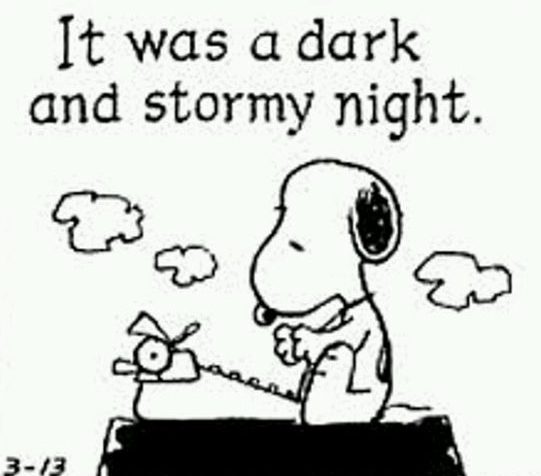Writing in the throes of inspiration is like meeting your true love for the first time. It’s exciting. Absorbing. Exhilarating. Writing full time, on the other hand, is like hanging out with your spouse. It can be great, but you need to try harder and be more imaginative. Sometimes, you even have to think about technique.
This idea popped into my head without warning as I sat staring at my blank computer screen. It made me think back to my college days. College was where I met Professor Pompous, a strictly academic type who insisted that good writers are born, not made. His reasoning was that writing couldn’t really be taught, and he seemed to be out to prove his point. At the time, it all seemed vaguely ridiculous (like most of life does to college students). But today, four books and four kids later, I have my own theory of where writers come from.
Prof. Pompous was right about one thing. Storytelling is something that’s born in you. In fact, it’s something that’s born in everybody. It’s only that some people hold onto the ability, and others don’t.
I caught my youngest son at it again last night. Robbed, by strict parental ruling, of distractions such as video games, TV, and fighting with his brother, Josh sat at the dining room table with his sophomore German textbook open beside his paper. He was supposed to be working on conjugating verbs. Instead, he was drawing. The lines of his paper were full of little figures in battle formation. Charging and shooting, locked in hand-to-hand combat, caught in explosions, and running in all directions. Any time Josh is alone — in the back seat of the car or at a family gathering in the living room — I’ll find him, pencil in hand, illustrating on paper the stories he tells himself in his head. Even if it means he’s neglecting his homework, I find I can’t yell at him about this because he reminds me of myself — with my own little people — in the bathtub.
My mother used to tell her friends that I could entertain myself for hours with no one else around. I had a collection of tiny toy figures, each about two inches tall, referred to as my “little people.” Some of them were Disney characters. There was also a set of veterinary figures — dogs with cages that opened and closed, and generic people in lab coats. And best of all was a three ring circus with a fat lady and a balloon vendor holding a big bunch of plastic balloons.
These little people mixed and mingled freely. The Good Fairy married the balloon vendor. Mickey Mouse dated the circus fat lady. Tinkerbell got locked in a dog cage. I told myself endless stories about them, using our backyard as a great wilderness and our living room shelves as a mysterious mansion. The bathtub was the ocean.
Now, my mother believed tubs were for washing. Period. She would run three to four inches of water in the bottom of the tub, hand me soap and a wash cloth, and sternly forbid me to play with my beloved little people while I was supposed to be washing behind my ears and under my arms. Being a kid, I sneaked my figures into the white porcelain seashore anyway. There I happily played with them until I heard my mother at the door. She’d stick her head in now and then to check on my progress.
Having no place else to hide my molded plastic people, I’d sit on them. I think I still have a scar in the shape of the Good Fairy’s wing tip on my bottom. These days, I carry my little people in a secret pocket of my brain and I call them characters. Sometimes I have to sneak them into dull meetings and long lectures, as I did so long ago in the bathtub. But I’ve never outgrown my childhood passion. Writers, in my mind, are just grownups who have never stopped playing with their little people.
Published in Romance Writer’s Journal, “The Last Word”

